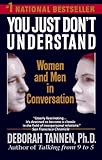Today we look at Lee Einsidler, philanthropist and CEO of
Sidney Frank Importing Company, Inc., a company associated with some of the biggest brands in its industry. I had the privilege of interviewing Einsidler this summer for a magazine and
online article. It was fascinating to hear how his
affinity for a particular brand that emerged while he was a teenager later
developed into an amazing career built on building brand affinity.

One of seven children, Einsidler was a teenager growing up in Long Island in a family of modest means; his father put bread on the table
running a liquor store. Working there during his teens, Einsidler got to know the sales representatives coming in, each brand of bottled beverage, and the company image behind it. So it’s little surprise he would continue in the family business. But as a teenager, Einsidler’s vision was bigger than operating a small family-run store. He wanted to work for
Seagram’s, which was the largest distiller of alcoholic beverages in the world.
While
Einsidler believed in his heart that he had a head for business, his high-school teacher was telling him he’d never amount to anything. So, in spite of his teacher’s judgment, he decided to take a few community college classes in sales and marketing, and then a few more, until he completed a full year of credits. Then, buoyed by that experience, he eventually went on to earn a bachelor’s degree with honors in 1978. He then used one of his father’s contacts to secure an interview at Seagram’s headquarters in New York and landed a job there. He
fulfilled his teenage dream; however, no one could anticipate
what the future would hold for him.



